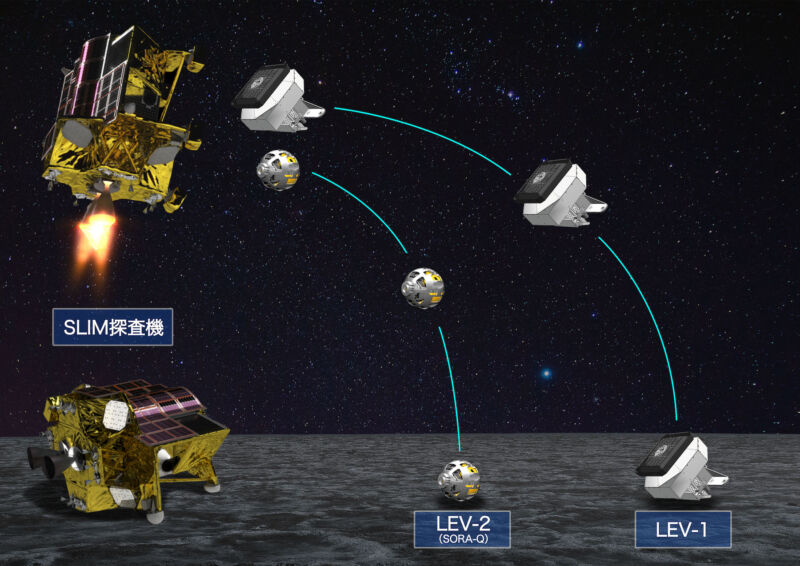
If everything goes according to plan Friday, Japan’s reputation as perhaps the world’s most robot-obsessed nation will extend a quarter-million miles away, all the way to the austere landscape surrounding an impact crater on the Moon.
Japan’s robotic Smart Lander for Investigating Moon (SLIM) mission will descend down to the lunar surface Friday. The spacecraft was in an orbit of less than 400 miles (600 kilometers) over the lunar surface Thursday, with the final descent maneuvers set to begin early Friday.
SLIM will fire its thrusters to lower the closest point of its orbit to the Moon down to an altitude of just 9 miles (15 kilometers). Then the spacecraft will commence its 20-minute final descent using its two hydrazine-fueled engines, culminating in a landing at 10:20 am EST (15:20 UTC) adjacent to a nearly 900-foot (270-meter) crater named Shioli in a region called the Sea of Nectar on the near side of the Moon.
The Japan Aerospace Exploration Agency (JAXA) manages the SLIM mission and will provide a live video webcast of the event. The YouTube video is embedded here.
SLIM launched September 6 on top of a Japanese H-IIA rocket, riding to orbit alongside an X-ray astronomy telescope. The spacecraft took a long route to get to the Moon, trading time for fuel in order to preserve propellant for Friday’s landing attempt. SLIM entered orbit around the Moon on December 25, then completed several maneuvers to settle into a low-altitude orbit in preparation for the descent to the surface.
If successful, the landing of SLIM would make Japan the fifth country to soft-land a spacecraft on the Moon, following the Soviet Union, the United States, China, and India. But landing on the Moon is a hazardous thing to do. Three commercial landers similar in scale to SLIM all failed to safely reach the lunar surface over the last five years.
One of those was developed by a Japanese company called ispace. Most recently, the US company Astrobotic attempted to send its Peregrine lander to the Moon, but a propellant leak cut short the mission. After looping more than 200,000 miles into space, Peregrine reentered Earth’s atmosphere Wednesday, where it was expected to burn up 10 days after its launch.
A Russian lander crashed into the Moon in August, and India’s first lunar lander failed in 2019. India tried again last year and made history when Chandrayaan 2 safely landed.
Japan’s pure technology demonstrator will try out sophisticated navigation sensors and robotics that could be used on future spacecraft bound for the Moon. SLIM cost the Japanese government approximately 18 billion yen ($121 million) to design, develop, and build, according to JAXA.
The 20-minute descent Friday will be the riskiest part of the entire mission. The spacecraft is modest in size, measuring nearly 8 feet (2.4 meters) tall and nearly 9 feet (2.7 meters) across. Without propellant in its tanks, SLIM has a mass of roughly 660 pounds (200 kilograms).
“The start of the deceleration to the landing on the Moon’s surface is expected to be a breathless, numbing 20 minutes of terror!” said Kushiki Kenji, sub-project manager for the SLIM mission.

